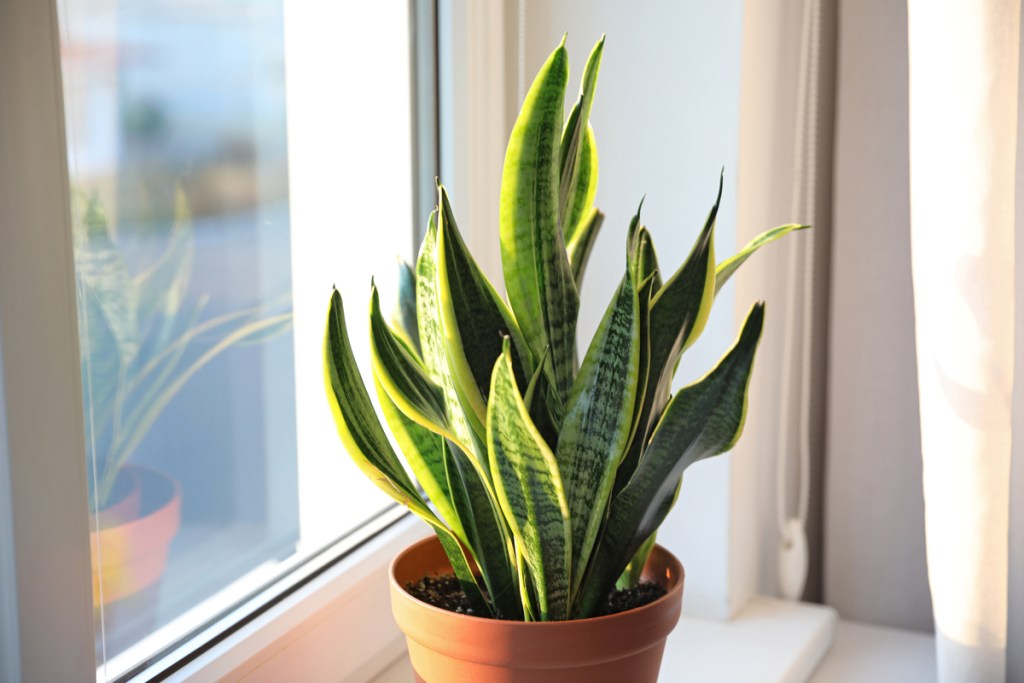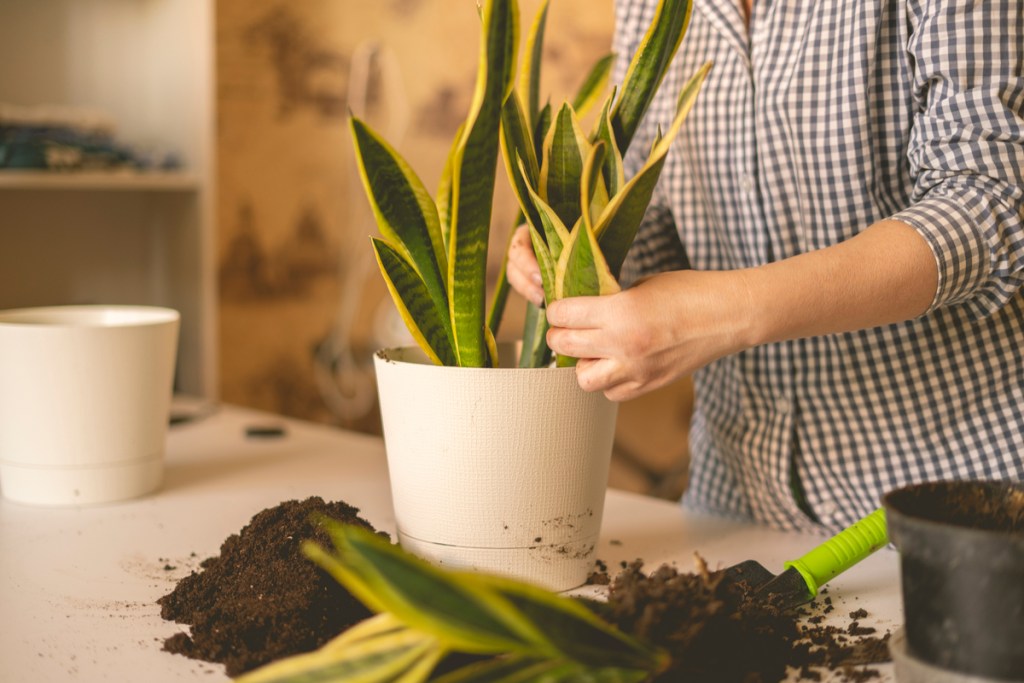Snake plants are a hardy houseplant popular among beginner and experienced indoor gardeners! Nicknamed the mother-in-law’s tongue, the snake plant looks beautiful almost anywhere in the home. It fits seamlessly into a home office, a bedroom, or a living room. It even makes a great bathroom plant, if you’re lucky enough to have one with a south-facing window. Snake plants are known to help filter harmful chemicals from the air, giving them an added bonus on top of their easy-to-care-for nature. Let’s take a look at how to propagate snake plants (in three easy ways) and what you can do with all the new plant babies.

Why would you want to propagate a snake plant?
The main reasons anyone would want to propagate a snake plant — or any other plant, for that matter — are to add more to your collection or give them away to friends and family who love plants just as much as you do. Propagation is an easy way to take a plant your mom admires every time she walks in your home and give her one to care for.
Snake plants are especially hardy, and they’re a great way to introduce someone to the world of indoor gardening, too! If you have a friend who wants a plant but doesn’t know where to start — and maybe doesn’t want to invest in something they may accidentally kill — you can propagate one, pot it for them, and wait for them to fall in love with plant care.
The three best methods of propagation
While some plants only have one method of propagation, snake plants actually have three: from cuttings, from offshoots, and from root division. Each have their own requirements and specifications, such as waiting until a certain maturity or growth size, but they’re all pretty easy — and they give you options. You aren’t stuck to chopping through the plant’s roots if you’d rather just grow from a cutting like you’re used to.
How to propagate from cuttings
Cuttings are a popular method of propagation for a lot of cacti and succulent species and is arguably the easiest to do! If you have other plants in your home that can be propagated with cuttings, then you’re probably familiar with the method.
- Sterilize a pair of scissors, shears, or a sharp knife (like a hori hori knife).
- Find a larger leaf on the snake plant and cut it close to the base of the plant. Make sure the leaf is healthy, otherwise it won’t have a good chance of being viable.
- Allow the cut end of the leaf to callous over, which usually takes a day or two. Once healed up, you can place the cut end directly into a pot of fresh cactus mix. New growth should happen in a couple months, if the cutting is successful.
- Alternatively, you can root the cutting in water. Instead of letting it callous over, you can immediately place the cut end of the leaf into a jar of clean water.
- Top off the water every couple days, and change it every two weeks to prevent algae growth.
- Once the roots are about an inch long, pot it in a container of fresh cactus mix.
With a viable cutting, you should have a new plant growing within a couple months.

How to propagate from offshoots
Offshoots are another common method of propagation for a lot of houseplants (raise your hand if you have more spider plants than you can handle). It’s as easy as growing from cuttings, but takes a bit more time to do because you need to wait for an offshoot, or pup, to grow from the parent plant.
Once one does, though, the process is simple:
- Prepare a clean pot with fresh cactus mix.
- Take the parent plant out of its pot and clean as much excess dirt from the roots as you can, that way you can get a good look at where the roots of the offshoot are growing.
- With a sharp, sterilized knife, cut the offshoot away from the parent plant (taking care to damage as few roots as possible).
- Plant the newly `cut offshoot into the fresh potting mix and water. Replant the parent plant into its container.
Propagating from offshoots is best done when the soil is on the drier side, as it will be easier to remove any excess and get the parent plant out of the pot with little-to-no risk.
How to propagate from root division
Root division is an easy method, though often one that indoor gardeners don’t opt for (why make the mess if you can take a leaf cutting?). Unlike a cutting, where you’re putting a lot of stock in whether or not it will be viable and grow roots, propagating via root division ensures that you already have a small root system in place. It’s a similar process to offshoot propagation; however, root division is usually done on larger plants that can benefit from separation as opposed to new offshoots.
- Just as you would with offshoot propagation, make sure you have a clean pot and fresh cactus mix.
- Take the parent plant out of its container, clean excess soil off the roots, and lay the plant on a flat surface.
- With a sharp, sterilized knife, divide the plant into two sections (or more, depending on how big your snake plant is), taking care to keep the roots as intact as possible.
- Pot the new section into the fresh container, and repot the parent plant in its original container.
It’s important to note that whether you’re propagating from offshoots or from root divisions, root damage will happen. It’s inevitable. The best thing you can do is remain cautious and make your cuts in places where the least amount of damage will happen.
When is it safe to repot?
Snake plants are relatively slow growers, so there’s no need to immediately repot your cuttings once they start to grow roots (which could take up to a month if the cutting is viable). Instead, you’ll want to keep it healthy and happy in its new home — at least until you’ve seen some substantial growth.
When your snake plants are ready to be repotted (be it the new cuttings or your parent plant), late winter or early spring is the best time. The plant is in an inactive stage, and you’ll get it nice and cozy in a new home before the growing season begins. Remember that snake plants like to be a little rootbound, so you don’t need to repot until you start to see things like roots growing out of the drainage hole or water running right through the soil instead of being absorbed.
Snake plants are one of the easiest plants to care for, and whether you want to give them away or want to have more in your collection, propagation is a great way to grow as an indoor gardener and expand your knowledge of how plants work.
Editors' Recommendations
- Focus on color: Bring some sunshine to your garden with these orange plants
- Grow your indoor or outdoor garden and support these Black-owned plant shops for Black History Month
- Do you live in climate zone 10? Here’s our guide to choosing the perfect climate zone 10 plants
- 7 easy patio plants that will thrive into the cold winter months
- 4 November garden plants you should consider growing



